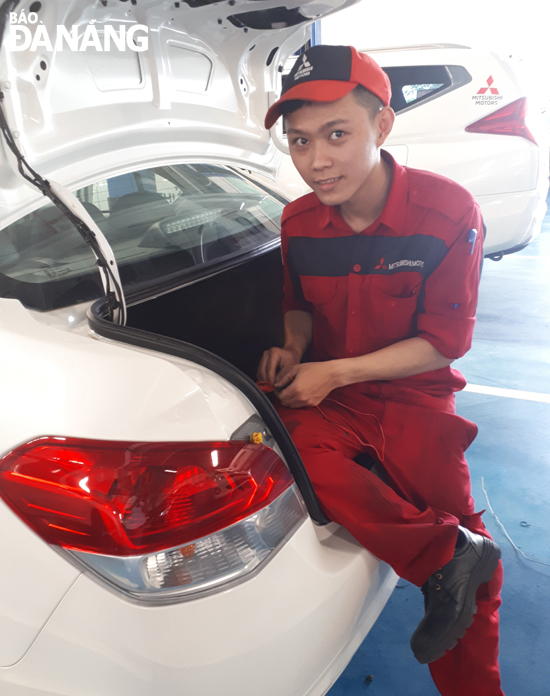City faces short supply of highly-qualified human resources
Da Nang’s labour market has been still facing a severe shortage of human resources, especially the highly-qualified. Even though many programmes have been set up to develop manpower, the reality still seems grim as the recruitment requirements are not being met.
 |
| There is a growing demand for automotive technicians in the city |
According to Mr Pham Truong Son, the Head of the Authority of the Da Nang Hi-tech Park and Industrial Zones, the total 6 industrial parks (IPs) and the hi-tech park now employed a combined total of over 77,000 employees, accounting for 14.1% of the city’s total labourers. However, most industrial companies now face the same trouble in recruiting workers who meet professional requirements.
As of June, IPs and the hi-tech park had still been in desperate need of more than 5,000 employees involved in such aspects as electronic assemblies, mechanics, welding, garments and textiles. In reality, only those who have already trained between at least 6 months and 2 years are eligible for job posts in the above-mentioned manufacturing aspects.
Recently, the US-based Universal Alloy Corporation Asia Pte. LTD-UAC, the developer of the 170 million US$ under-construction Sunshine aerospace components factory, entered into an agreement with the city’s University of Science and Technology on providing training programmes and recruiting graduates.
According to a representative from UAC, the testing of the technology lines and production equipment is underway, and this remarkable project is expected to be officially put into operation either at the end of next month or early next year. Next year, the Sunshine factory is scheduled to start exporting its products to UAC's partners worldwide, including Boeing and Airbus.
However, up to now, the corporation has recruited 200 out of the wanted 2,000 engineers and skilled workers.
Meanwhile, as many as 60 Japanese-invested enterprises operating in the city have also taken active steps to deal with a shortage of skilled employees. In fact, they have no choice but to re-train newly-recruited employees sourcing from local universities, junior colleges and vocational training schools.
According to the municipal Department of Labour, War Invalids and Social Affairs, by 2025, the city will have been in need of additional 250,000 employees. Of this figure, the tourism industry alone needs 160,000, and by 2030, the figure will have reached 300,000, including 70,000 working for this lucrative aspect.
Besides tourism, such other aspects as information technology, industry-construction and mechanics now need solutions to slake their urgent thirst for high-quality human resources.
Currently, the city houses 64 vocational training establishments, including junior colleges, intermediate schools, and vocational centre, all of which offer training to a combined total of 52,000 students each year.
In the past 5 years, these vocational training schools have trained a total of 123,823 trainees, thereby increasing the number of already-trained workers from 49.15% in 2017 to 53% in 2019. This encouraging number clearly reflects the city’s great efforts in promoting vocational training.
However, there is still the fact that a large number of untrained workers, or 47% of the city’s total labourers, are now posing another problem to the city in meeting the increasing demands amongst businesses.
Under the municipal administration-approved adjusted plans of planning IPs across the city, by 2025, the city will have seen 3 more IPs attracting a total of about 70,000 labourers. If the city does not speed up vocational training from right now, the labour shortage will become is an inevitable matter.